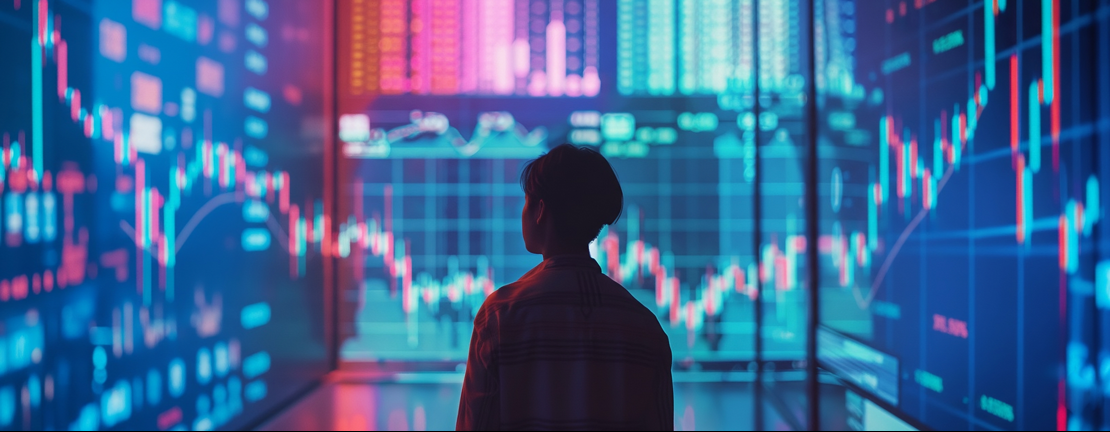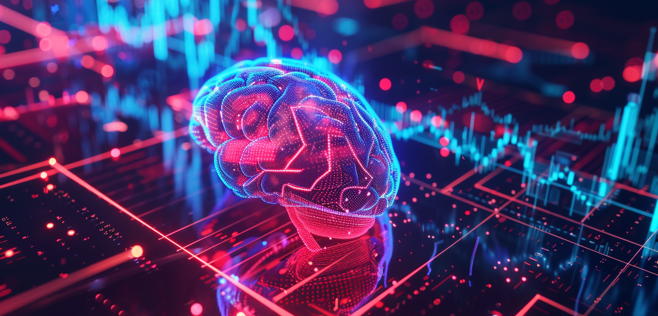Published 12 Oct 2025
Predicting the Unpredictable: Inside AI’s Role in Crypto Trading

Artificial intelligence has become the new oracle of the crypto market. Trading bots, data models, and neural networks now claim to read every shift in sentiment and price movement before it happens. Investors often treat these systems as fortune tellers, expecting them to predict the next rally or crash with surgical precision.
But crypto doesn’t follow the same logic as traditional markets. It’s shaped by emotion, sudden regulation changes, global events, and decentralized behavior that no dataset can fully capture. AI can’t eliminate uncertainty — it only helps traders understand it better.
The real question isn’t “Can AI predict the market?” but “What kind of insight does AI actually provide?” Instead of guessing future prices, today’s systems learn to recognize probability patterns, hidden relationships, and early signs of sentiment or liquidity shifts.
This article explores what predictive AI can realistically achieve in crypto. It breaks down how these systems work, where they fail, and how traders can use them wisely — not as a crystal ball, but as a strategic intelligence tool.
How Predictive AI Actually Works
AI forecasting systems don’t guess the future — they calculate probabilities based on patterns in massive streams of data.
These models scan everything from historical price action and trading volumes to blockchain activity, social media trends, and liquidity flows. Their goal isn’t to say what will happen, but to estimate how likely something is to happen next.
The process starts with training. AI studies years of market data and learns how certain conditions — like rising exchange inflows or shifts in trader sentiment — tend to precede specific price reactions. Once trained, the model can spot similar conditions in real time and flag them as early signals.
Instead of predicting that Bitcoin will rise tomorrow, an AI system might detect a 60% probability of upward momentum forming within a given timeframe. Traders then use that information to adjust risk exposure, not to place blind bets.
Modern systems evolve continuously. They adapt to changing market behavior, learn from feedback, and refine their internal logic. The key advantage isn’t foresight — it’s speed and adaptability. AI reads the market faster than any human and keeps recalibrating as new data arrives.

Why Crypto Still Resists Prediction
No algorithm, no matter how advanced, can fully decode the chaos of crypto markets.
Unlike traditional finance, where historical patterns often repeat, crypto lives in constant flux. A single regulation update, security breach, or viral tweet can erase months of technical consistency in seconds.
AI models thrive on patterns — but crypto constantly breaks them. Price movements are influenced not only by data but also by emotion, speculation, and sudden liquidity shifts. Even the most adaptive systems face limits when the market’s logic changes overnight.
Many prediction models show strong results in calm or trending conditions, then collapse during black swan events. What looks like a “high accuracy rate” in backtests often falls apart when real-world volatility hits. The models can identify trends, but they struggle when human behavior or global events rewrite the rules.
This doesn’t mean AI is useless — it means its purpose must shift. Instead of chasing certainty, AI’s real strength lies in recognizing risk zones, momentum shifts, and sentiment extremes long before most traders notice them. It’s not about predicting the future; it’s about understanding when the ground beneath the market starts to move.
Smarter Use of AI — Context Over Certainty
AI becomes powerful when it’s used for context, not prediction. The best traders treat it as an analytical layer that clarifies the market’s mood, liquidity, and structural balance — not as an automated signal machine.
These systems can detect unusual funding patterns, social sentiment shifts, or liquidity drains long before they turn into visible price moves. That information helps traders understand where the market pressure is building, not when to buy or sell.
Used correctly, AI supports decision-making through probability and pattern awareness. It doesn’t replace human judgment — it amplifies it. The algorithm handles the heavy data work, while the human interprets the meaning behind it.
In practice, AI tools are most valuable in risk management. They flag rising volatility, adjust exposure levels, and help maintain discipline when emotions take over. Instead of reacting to every move, traders can use AI insights to position themselves intelligently, accepting uncertainty as part of the process.
AI isn’t there to promise perfect timing. It’s there to build understanding — to help traders see the story behind the numbers.

The Future — Adaptive Systems and Transparent Intelligence
The next generation of crypto forecasting tools will focus less on prediction and more on adaptation.
Markets evolve too quickly for static models. The future belongs to systems that learn continuously, update their logic in real time, and merge multiple data layers — on-chain metrics, exchange activity, and social sentiment — into one adaptive framework.
Transparency will define credibility. Traders are becoming skeptical of “black box” algorithms that claim accuracy without showing how results are produced. Recording AI predictions and their outcomes on-chain can bring accountability, letting users verify how models perform over time.
We’ll also see deeper integration between human and machine intelligence. AI can handle the flood of data; humans provide interpretation, ethics, and intuition. Together, they can navigate crypto’s complexity far better than either alone.
In this future, the goal won’t be to eliminate uncertainty but to understand it faster — turning unpredictable markets into readable systems of probability and behavior.
Conclusion — From Prediction to Insight
AI has transformed how traders read the crypto market, but not how the market itself behaves.
Volatility, sentiment swings, and black swan events still shape outcomes more than any algorithm can foresee. What AI truly offers isn’t prophecy — it’s perspective. It helps detect patterns early, gauge probabilities, and reduce emotional bias in decision-making.
The most effective use of AI lies in building awareness, not certainty. Traders who combine machine-driven analytics with human judgment gain an advantage that lasts beyond a single cycle. They react less, think more, and adapt faster.
As crypto matures, the line between prediction and understanding grows thinner. The future of AI in trading isn’t about “being right” — it’s about seeing the market clearly, with data and discipline on your side.

 Get RateX Pro
Get RateX Pro

 06 Jun 2024
06 Jun 2024


